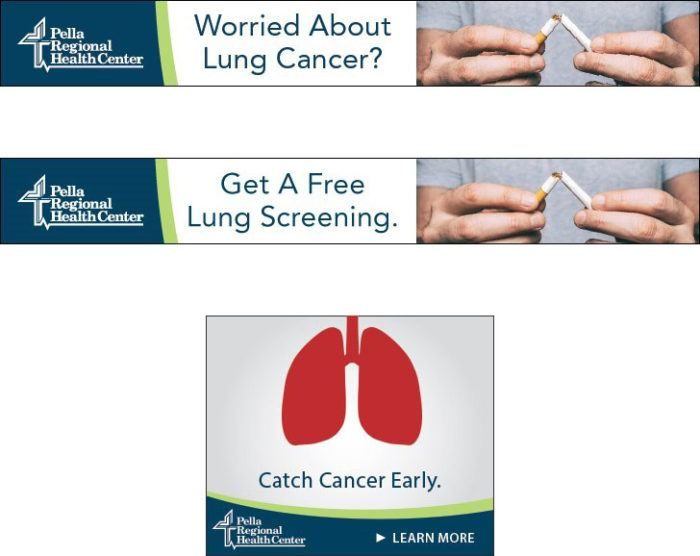Check out these recent healthcare digital-advertising campaigns and see how investments in keyword research paid off in results — and recognition.
*Author’s Note: Due to the popularity of this post I’ve updated it with a new example.
2021 Award-winning Healthcare Advertising Campaign
Best practices around digital advertising continue to evolve each year. See how this award-winning campaign uses paid campaigns to generate appointments and awareness.
Wayne UNC Health Care
Wayne UNC Health Care, a nationally-recognized affiliate of UNC Health Care, used eye-catching and awareness-building campaigns throughout social media, Spotify, and other streaming services to promote their new mammogram technology and support breast cancer awareness month.
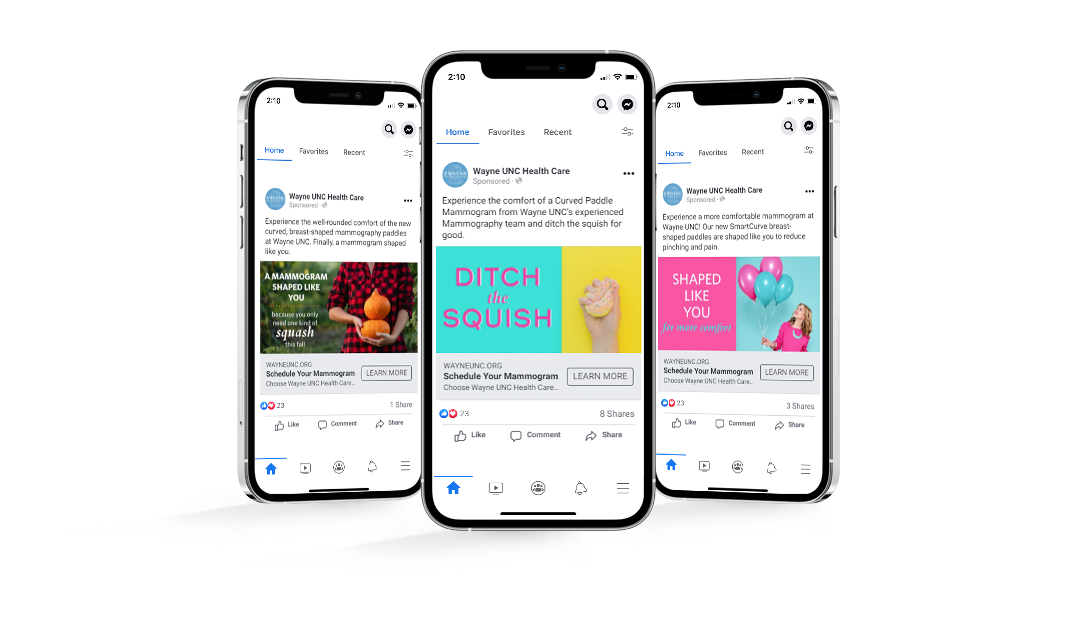
Wayne UNC Health Care’s creative digital ads won Platinum for the eHealthcare Leadership Award for Best Integrated Marketing Campaign. The focus of each campaign was that one in eight women receive a breast cancer diagnosis in their lifetime and the benefits of early detection.
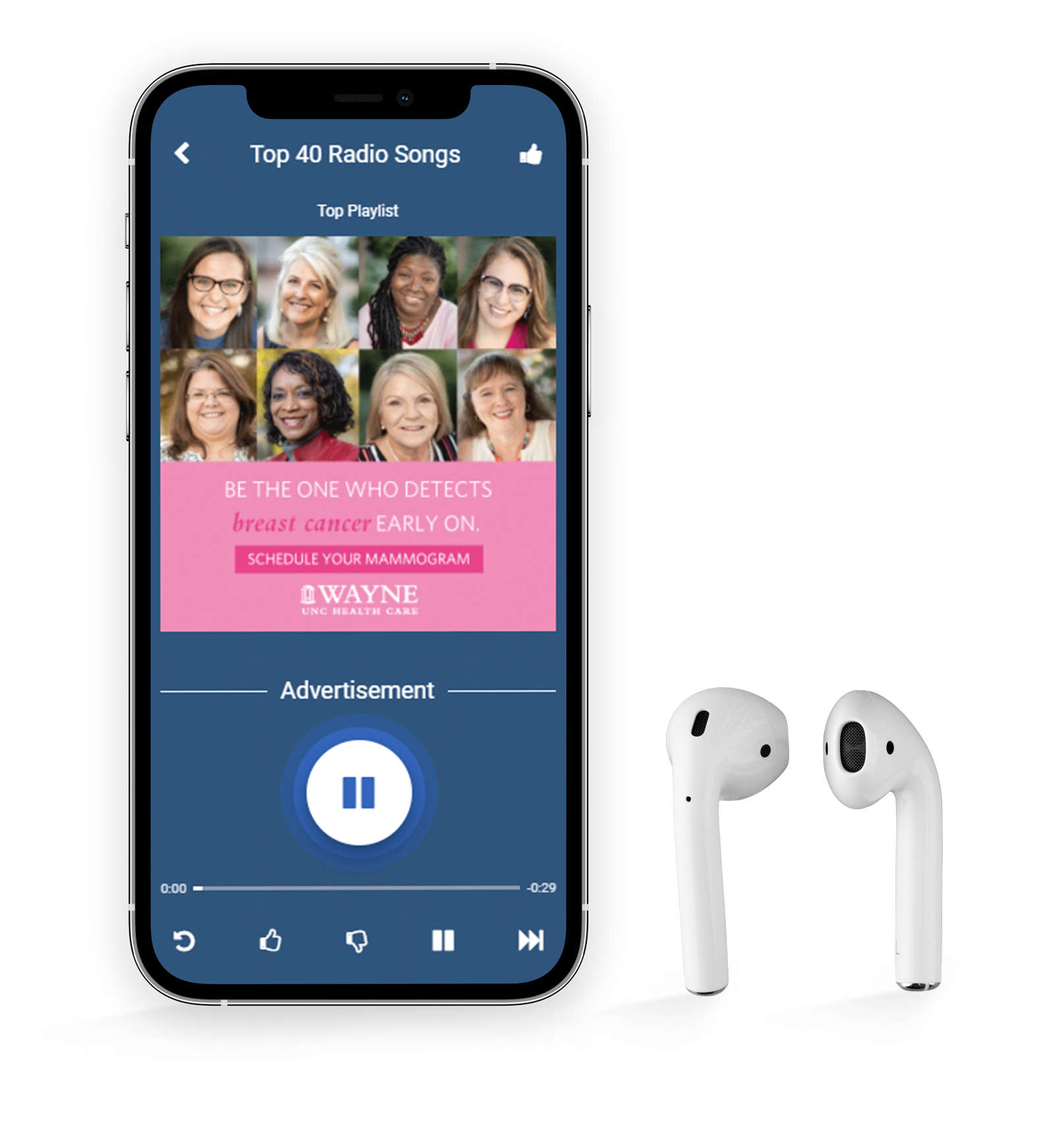
Campaign messaging also highlights the new, innovative technology at Wayne UNC Health Care using their brand voice as an effective way to generate engagement throughout their demographic and geographic target audience.
2018 Award-winning Healthcare Advertising Campaign
Each year gives us new strategies to take advantage of online and this year was no different. Check out this award-winning campaign that leveraged advanced ad types.
Owensboro Health
When Owensboro Health, Owensboro, KY, began construction on three Healthplex outpatient facilities in their region, they needed to build awareness for the convenient access and wide range of services available.
Before the grand openings, Owensboro Health focused on building awareness through a Google Ads paid text campaign.

After each of the facilities opened in mid-January 2018, the campaign transitioned to a conversion-focused paid search campaign. The campaigns used a variety of paid tactics, including ad extensions and call-only ads.
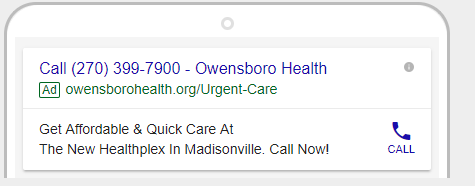
One tactic included using an advanced Google Ads feature called dynamic keyword insertion. This technique dynamically updates ad text to include selected keywords that also matches a user’s search query. In the image below, you can see the search query was dynamically added to the headline.
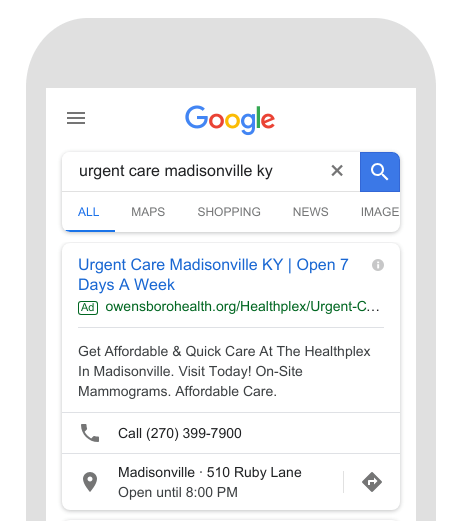
This web advertising campaign took home a Platinum Award from MarCom in the digital media – PPC category.
2017 Award-winning Hospital Campaigns
Let’s take a look back at previous award winners as well.
Pella Regional Health Center
Pella Regional Health Center began offering a lung cancer screening and wanted to fill their appointment books. The Iowa-based health center turned to Geonetric to build and optimize display and text ads and run a five-month campaign.
The campaign not only increased appointments, it also received a Gold Award for Best Marketing Campaign from the eHealthcare Leadership Awards.
The Right Partner
What else do these campaigns have in common? Their digital agency. Geonetric manages comprehensive, multi-channel digital advertising campaigns for hospitals and health systems that do more than win awards — they deliver real results. Check out more of our campaign work and then give us a call.

